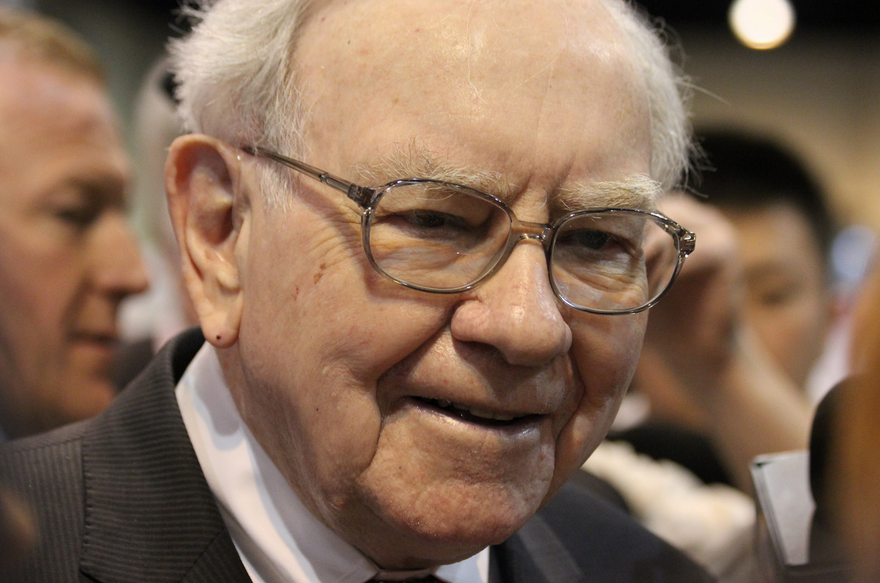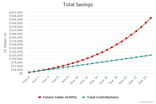With a net worth assessed at $111 billion, Warren Buffett is often referred to as the "Oracle of Omaha." Buffett and his holding company, Berkshire Hathaway (BRK.A 0.64%)(BRK.B 0.54%), are legendary in the world of investing. How did he get started in the industry, and what's his secret to building massive wealth? Read on to find out more.

How did Warren Buffett get rich?
How did Warren Buffett get rich?
Warren Buffett was born in Omaha, Neb., in 1930, the second child (and only son) of four-term congressman and stockbroker Howard Buffett and Leila (nee Stahl). His father’s ancestors were French Huguenots; Leila was of German and English descent.
The younger Buffett got his start as a stockbroker in 1951 at Buffett-Falk, his father’s Omaha firm. Buffett would be employed as a securities analyst at Benjamin Graham’s firm, Graham-Newman, three years later. The author of “Security Analysis” and “The Intelligent Investor” was also Buffett’s tutor at the Columbia Business School of Columbia University and had rejected Buffett’s offer to work for free for Graham-Newman before he joined his father’s firm.
After a couple of years at Graham-Newman, Buffett decided to start his own partnership, Buffett Associates, with six other partners. Buffett made a minimal investment of $100. In 1958, Buffett bought a house for $31,500 in Omaha, where he still lives today.
From 1956-62, Buffett formed multiple other partnerships (often with Buffett investing just $100). His stellar performance as a money manager for the partnerships led him to consolidate them into one partnership, Buffett Partnership Ltd. The combination of his investments in the partnerships and outside interests made Buffett his first million at the age of 30.
Buffett was on his way to investment history. In 1985, Buffett’s net worth surpassed $1 billion for the first time. By 2021, he was worth an estimated $100 billion.
High Net-Worth Individual (HNWI)
Warren Buffett's education
Warren Buffett's education
Despite the folksy demeanor and the homespun aphorisms, Buffett attended some of the most prestigious business schools in the country. He attended the Wharton School at the University of Pennsylvania for two years – regarded as one of the premier business schools in the U.S. He later transferred to the University of Nebraska, where he graduated in business administration.
After being rejected by Harvard, Buffett entered the Columbia Business School of Columbia University, where he met Graham and earned a master’s in economics.
Although Buffett is a product of his education, it’s also important to note his intense interest in his chosen profession. He was already familiar with Graham’s work before meeting him, and he only entered his father’s brokerage after Graham had turned down his application to work at Graham-Newman.
Ultimately, Buffett’s work and legacy would match Graham’s. Although the building blocks of Buffett’s investing expertise were laid in formal education, the construction plans came from a deep love of the investing world.
Warren Buffett’s family life
Warren Buffett’s family life
Buffett has three children from his first marriage to Susan Thompson: Susan Alice Buffett, Howard Graham Buffett, and Peter Buffett. Peter is a well-regarded musician and composer. Susan is a philanthropist and chair of the Sherwood Foundation and the Susan Thompson Buffett Foundation. Howard was a longtime director at Coca-Cola, including a stint on the board of directors from 2010-16. He is also the chairman and CEO of the Howard G. Buffett Foundation and a director at Berkshire Hathaway.
After the death of his wife in 2004, Buffett married his longtime companion, Astrid Menks, in 2006.
Investment style
Investment style
Buffett is strongly associated with value investing, particularly in the early part of his career with what some call “deep value” investing. Graham liked to describe the strategy as looking for “cigar butts.” As Buffett has observed, his approach entailed a quantitative approach to investing, identifying companies with an intrinsic value that might not necessarily show up on a qualitative assessment.
A straightforward example might include a company with low growth but holding property on its books, which is a significant part of its market capitalization. Of course, investment in many of these sorts of companies – or cigar butts – might not work every time. Still, the downside is limited by the property's intrinsic value, and some of the companies can turn their fortunes around. In other words, Buffett’s philosophy is to buy stocks with limited downside and potential upside.
This approach can still be followed today. But given that such opportunities tend to exist in smaller companies, it’s implausible that a solely quantitative-focused “cigar butt” approach would move the needle for Berkshire Hathaway.
Related investing topics
Buffett’s style evolved to combining detailed qualitative analysis with quantitative analysts and buying into large-cap stocks befitting Berkshire Hathaway’s size. As a result, Buffett is not known for speculating on stocks that “grow” into their valuations. Instead, he is now known for buying businesses with solid market positions, recurring cash flows, and generating an excellent return on assets (even if top-line growth is mundane).
Buffett also differs from Graham and the investment world in general in terms of the concentration of his portfolio. Conventional wisdom is that diversifying stock-specific risk by holding myriad stocks is optimal since it generates returns and minimizes the risk of ruin. However, in early 2023, Berkshire Hathway has 86% of its holdings in just eight stocks, with a whopping 44% in Apple alone.
That level of conviction in stocks has led to Berkshire Hathaway’s outsized returns in an industry fixated on fixing position sizing and sector allocation.
Investment legacy
Investment legacy
Warren Buffett is an investment phenomenon unlikely to be repeated soon, but that doesn’t mean investors can’t incorporate his principles into their investments. The willingness to identify value opportunities in solid businesses with defensible business moats and not be pushed around by market sentiment or investment fashion has been a Buffett hallmark. It’s easier said than done, but Buffett’s astonishing success is testimony to its enduring viability as an investment strategy.









